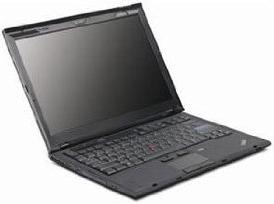Solid State Drive (SSD) Basics
By Stephen Bucaro
When a computer runs an application, or even the operating system, it first copies the
code for the application from it's hard disk drive to its main memory, then it runs the
application from main memory. The reason for this is because a hard disk drive is a
relatively slow serially accessed mechanical device, while main memory is constructed
of solid state devices called Random Access Memory (RAM).
A hard disk is constructed of a number of platters in a stack. The surfaces of the platters
are covered with a magnetic coating. Electromagnetic read/write heads are positioned above
and below each platter. As the platters spin, the drive heads move in toward the center
surface and out toward the edge. In this way, the drive heads can reach the entire surface
of each platter.
Data is stored on a hard disk in arc shaped paths called clusters. In order to access
a particular piece of data, the read/write heads must move to the proper position on the
platters, and then wait for the platter to spin until the proper cluster is under the
read/write heads. Then the clusters containing the code for the data being requested may
be read from the hard disk drive.
Unfortunately, unless the disk has been recently defragmented, the clusters containing the
code for any particular application will not be in contiguous clusters. In this case, in
order to access the entire code for an application, the read/write heads will be required
to move in and out across the platter, and wait for each individual group of clusters
containing the code for the application to come under the read/write heads. In computer
time, this is a very slow operation.
To read data from the computer's main memory RAM, the computer's solid state bus interface
unit places the addresses of the application's data on the solid state RAM's address port,
and the RAM places the data at those addresses on the data bus. Since RAM is "randomly
accessed" rather than serially accessed, the concept of fragmentation does not apply. Thus
data can be accessed from solid state RAM much faster than from a mechanical hard drive.
You might ask, then why don't they just get rid of the hard disk drive, and store everything
in solid state memory? Unfortunately, RAM is volatile, in other words when you shut off the
power the data it contains is lost. There is a type of solid state memory called "flash
memory" that is is a non-volatile, the type used in memory cards and USB flash drives,
but it's too expensive to used for the amount of storage required to replace a hard disk
drive. Too expensive that is - until now.
• The typical access time for a hard disk drive is around 5 milliseconds,
while the typical access time for a solid state drive is around 0.1 millisecond. This makes
the solid state drive about 50 times faster than a hard disk drive.

Lenovo Laptop with 64 GB Solid State Drive
Since 2006 computer manufacturers have been producing Solid State drive based PCs. The ASUS
Eee makes a laptop that uses a 20 GB SSD. Lenovo makes a laptop that uses a 64 GB SSD.
Apple makes a laptop that has a 128 GB SSD. Even the computer developed by the One Laptop
Per Child (OLPC) association, uses an SSD rather than a hard drive.
More Computer Anatomy Articles:
• Buffered, Unbuffered, Registered Memory, What is the Difference?
• Build Your Own Computer
• ABC's Of DVD Drive Abbreviations
• Tips and Techniques For Building Your Own PC
• Network Interface Card (NIC)
• History of the QWERTY Keyboard
• VIA Chipsets
• The RS-232 Serial Port
• Advanced Micro Devices (AMD) Chipsets
• Hard Drives - ATA versus SATA
| 
